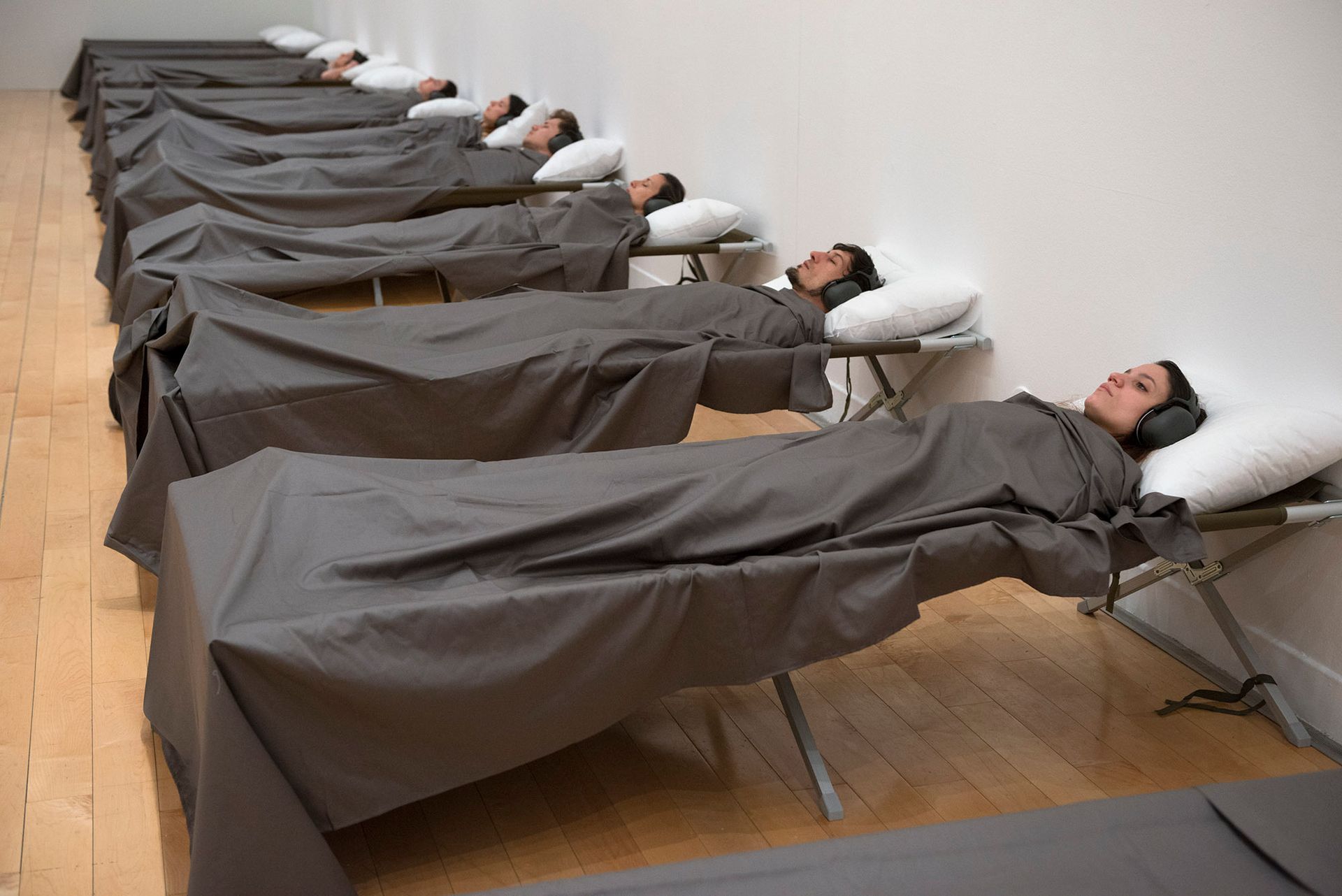Marina Abramovic is stepping out of the limelight for her latest performance art project. Her 716-hour stint sitting motionless and silent in the atrium of the Museum of Modern Art in New York was the main attraction of her 2010 retrospective at the museum, The Artist Is Present, which drew more than 550,000 visitors. At the Benaki Museum in Athens, the Marina Abramovic Institute has partnered with NEON, the non-profit organisation founded by the Greek collector and entrepreneur Dimitris Daskalopoulos, to stage As One, a seven-week programme featuring 29 emerging Greek and international performance artists (until 24 April). “I’m not here to show you my own work or to perform, I’m here to be a delegate of my institute and legacy,” Abramovic said at the launch event on 10 March.
The programme is dedicated to the Belgrade-born artist’s preferred medium, long-durational performance. Six Greek artists are performing for the full run, eight hours a day (ten on Fridays), six days a week. Twenty-three others (18 Greek and five international) are presenting shorter interventions of one to six days. They were sel ected by Abramovic, the institute’s director Serge Le Borgne and the artist Paula Garcia from among 320 artists born or based in Greece who responded to NEON’s open call last year. The organisation is funding the project, which is described as its “biggest and most ambitious” to date, filling the three floors of the Benaki Museum’s 8,200 sq. m Pireos Street venue.

The collaboration introduces both Greek artists and the public to the “Abramovic Method”. In January, the six artists commissioned to perform long-durational works spent ten days in the Corinthian mountains with the choreographer Lynsey Peisinger to complete “Cleaning the House”, Abramovic’s crash course in sensory deprivation and physical control. Peisinger has also trained a small army of facilitators to lead visitors through a less intensive set of activities at the Benaki Museum.
The Method is less an interactive work of art than a primer for appreciating performance. Participants must first deposit their personal belongings, including phones and watches, in lockers. They pass through three rooms of warm-up exercises (breathing, stretching) before putting on noise-cancelling headphones and taking the hand of a facilitator. In silence, people walk in slow motion, lie on barracks-style beds and stand with their eyes closed on low plinths. They sit studying coloured squares, sorting and counting piles of rice and lentils and, in pairs, sustaining the “mutual gaze” that moved some to tears during The Artist Is Present.
“You have to teach the public to look at something where nothing much is happening,” says Abramovic. “How can you have them coming straight from the streets, with phones, selfies, a million things to do and see something like a girl just counting time, a turtle moving?” The Method is strategically placed at the entrance to the museum, before visitors encounter Thodoris Trampas demolishing a giant rock, Lambros Pigounis enduring subsonic vibrations and Virginia Mastrogiannaki, the “human clock”, among others. “The only thing that you have to do is be in the present,” Abramovic says.
As One, which includes re-performances of two of Abramovic’s past works and a series of lectures and workshops, continues the Marina Abramovic Institute’s travelling educational mission. The planned $31m centre for time-based art in Hudson, New York, is still a long way from completion (a Kickstarter campaign raised more than $650,000 to pay the architect Rem Koolhaas and his firm OMA for the design). But the institute’s residencies in Sao Paulo and Sydney last year attracted more than 130,000 people. “The building will one day be the headquarters but it’s not about coming to the building,” Abramovic says. “I came to Greece and my dream is to go to Ukraine. I want to go to difficult places where we can be needed.”
In a country grappling with the double crisis of economic recession and migration, performance art now seems increasingly relevant, says NEON’s director Elina Kountouri. “At this particular time in Athens, there’s a lot of activism and anxiety, stress and release. Performance evokes these kinds of reactions from the audience. I thought it was the time to show this medium.” The Benaki Museum will be open free of charge over extended hours to encourage visitors to return throughout the changing programme. “It couldn’t work any other way for this kind of show, for Athens in crisis,” Kountouri says.

